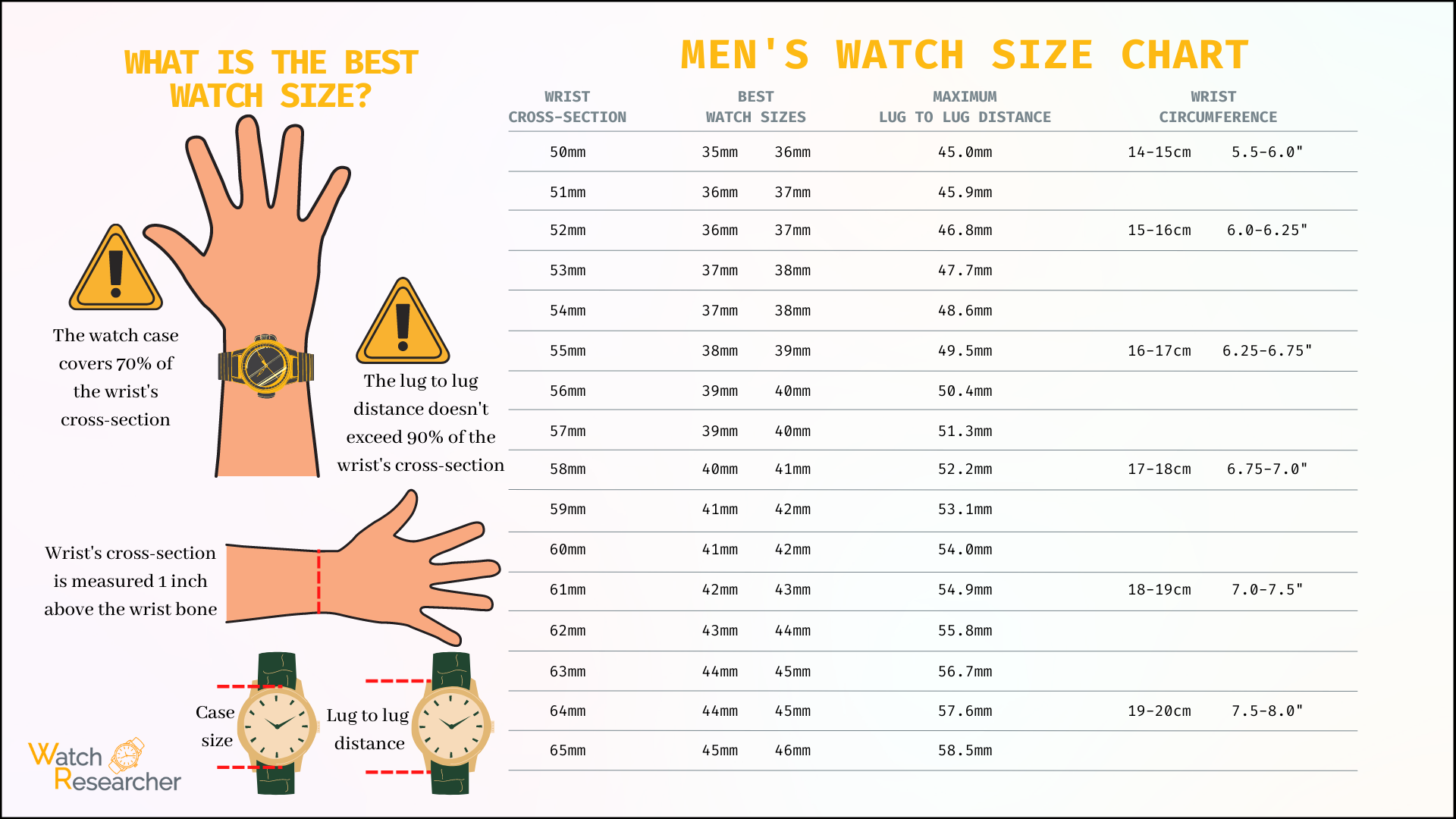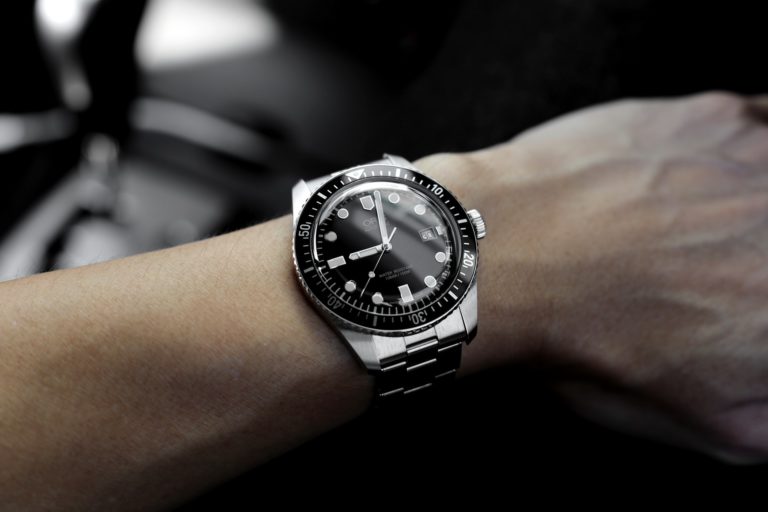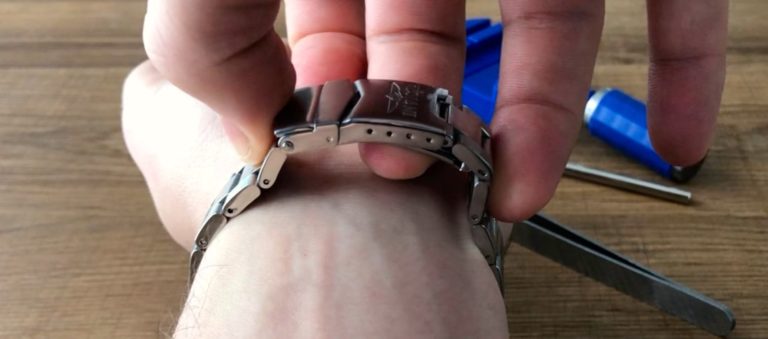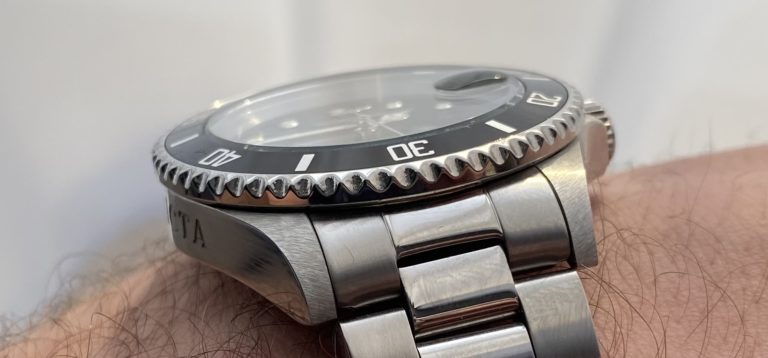Affiliate Disclosure: As an Amazon Associate I earn from qualifying purchases. Details
Size matters. At least with watches it does. A small wristwatch on a large wrist looks odd, as does a large one on a slender wrist.
Watches are no longer employed merely for timekeeping purposes but for various other reasons in our everyday lives, and probably the most important of them is to complement an overall appearance.
As a result, the watch – one of the few accessories men can proudly wear – must look aesthetically fitted.
The following watch size guide will help you in this matter by providing detailed guidelines for choosing the most appropriate watch size for your wrist.
So stay tuned to find your perfect size of a watch!
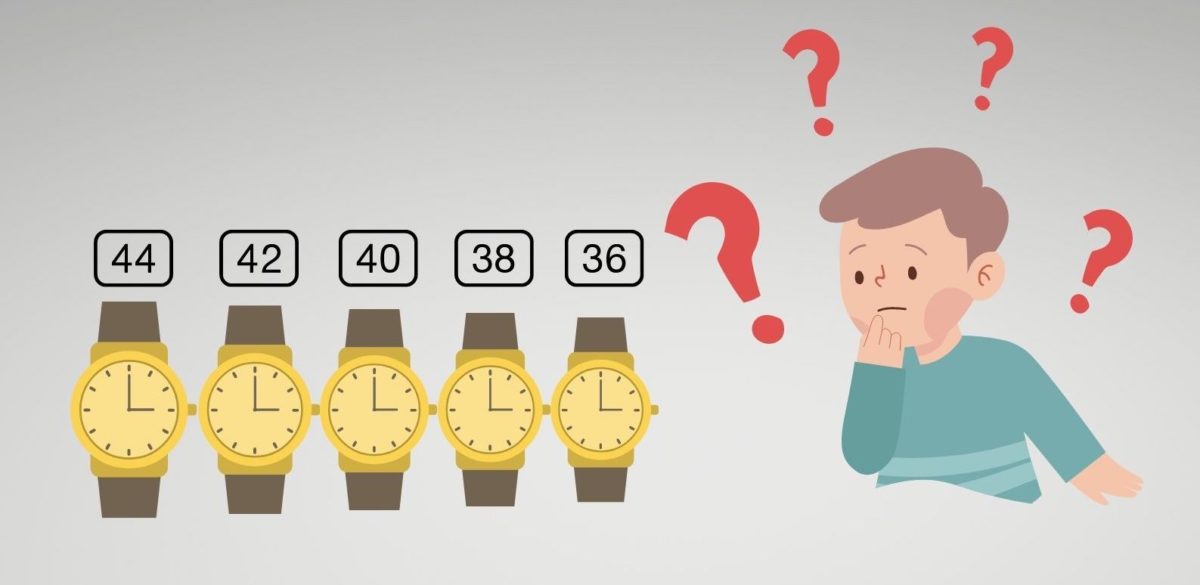
What Is The Best Size of a Watch?
Proportions are everywhere, whether we like them or not. The human mind tends to accept proportional visuals and reject disproportional.
It applies to watches as well.
Therefore, it’s important to wear watches that are neither too small nor too large for a wrist but right in a sweet spot.
But what is considered a sweet spot, then?
Aesthetically, the perfect size of a watch is when the case covers 70% of the wrist’s cross-section. With the lugs included, the coverage should stay below 90% of the wrist’s breadth.
These dimensions ensure that the watch covers most of the wrist area while at the same time doesn’t overcrowd it.
The image below depicts a perfect example of a properly sized watch – it covers 70% of the wrist’s cross-section and, with the watch lugs included, doesn’t exceed 90% of the wrist’s breadth.
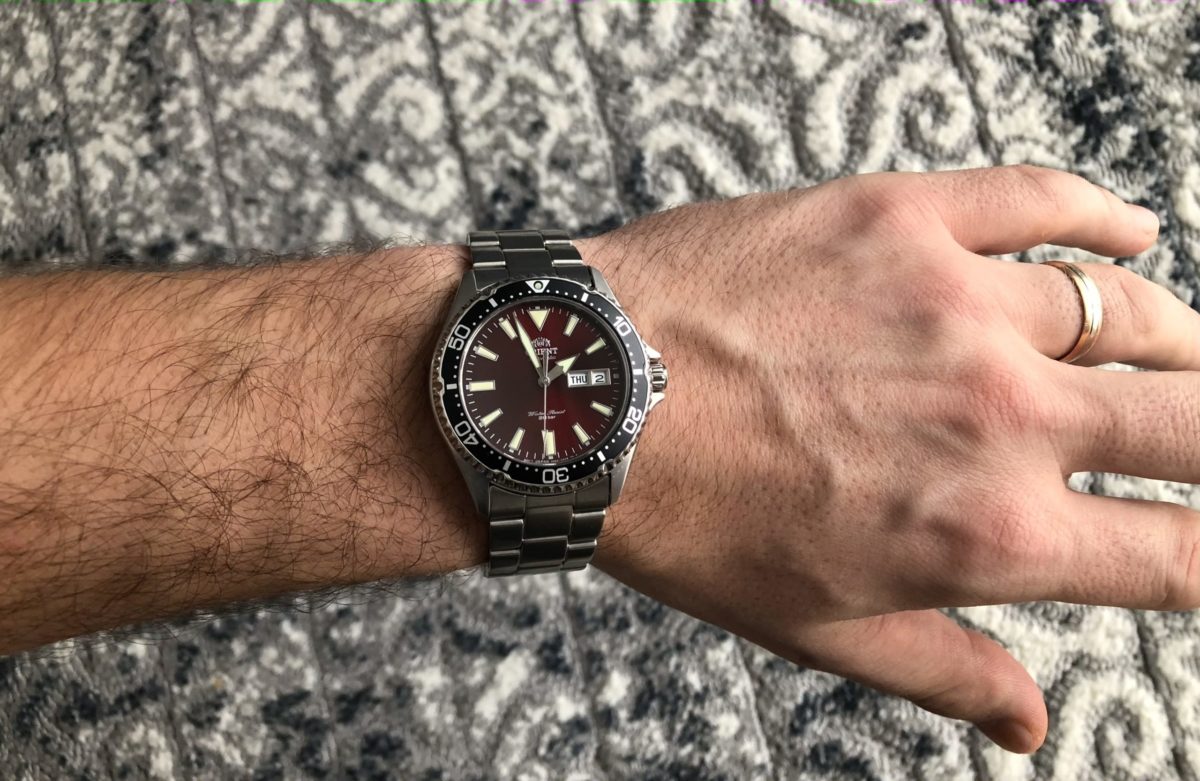
However, the percentages can be somewhat different depending on various circumstances, which we’ll cover in the second part of this post. For example, the 65% area is visually more suitable for some than the 70% area. Also, some may find 75% to be more appropriate.
Therefore, don’t take the percentages as a must but as a valuable indication of what watch sizes you should be aiming for.
But what if you wish to wear a whole lot bigger or smaller watches that steer far away from the “70-90 rule”?
Go ahead! If you like the watch and feel comfortable wearing it, no one stops you from wearing it. After all, this guide is just a suggestion, not a strong recommendation or a rule.
And, to be fair, there are loads of oversized watches so stunning that it would be regrettable not to try them. The same applies to some of the field watches that are typically smaller in size but offer unique vintage vibes.
But coming back to the topic of this post, let’s begin with determining the perfect watch for every wrist size.
The first thing you have to do is to measure your wrist size.
How To Measure Wrist Size For Watches?
To determine the cross-section of your wrists for the “70-90 concept,” place a tape measure on the top of your wrist. The tape should be located right above the wrist bone because this is the place men should wear watches.
As you can see from the image below, my wrist’s cross-section measures 60mm (It’s best to do THIS calculation in millimeters because watch sizes come in the same units).
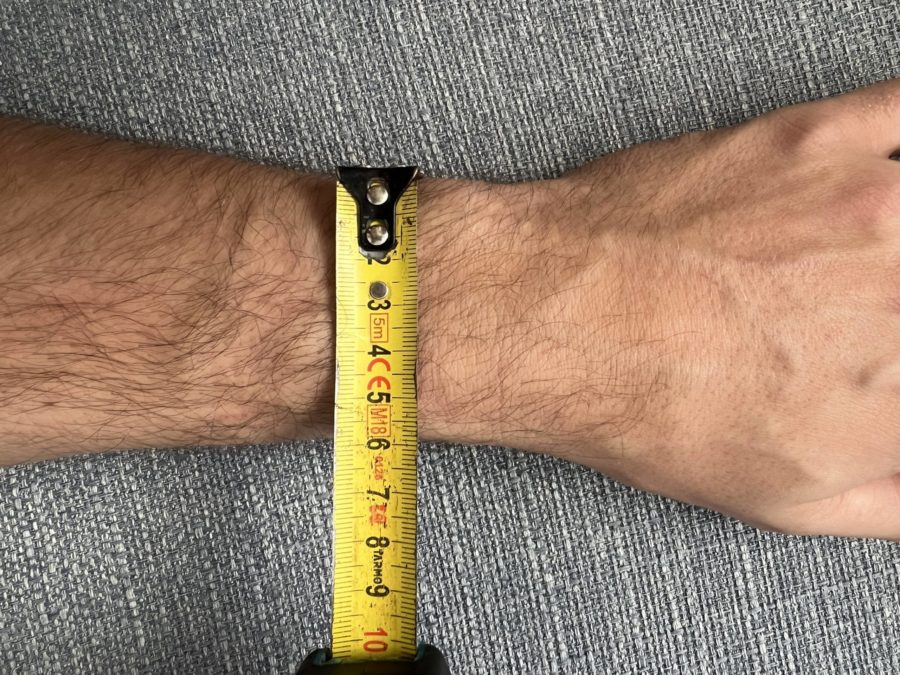
An alternative measurement you are going to need is the wrist’s circumference.
For measuring the circumference, wrap the tape around the wrist in exactly the same location you did with the previous measurement – that is, right above the wrist bone.
Make sure not to wrap it around your wrist too tightly or loose. It has to be the way you normally wear watch bands.
Now, the tape says 18.5cm (7.3in). That is my wrist circumference.
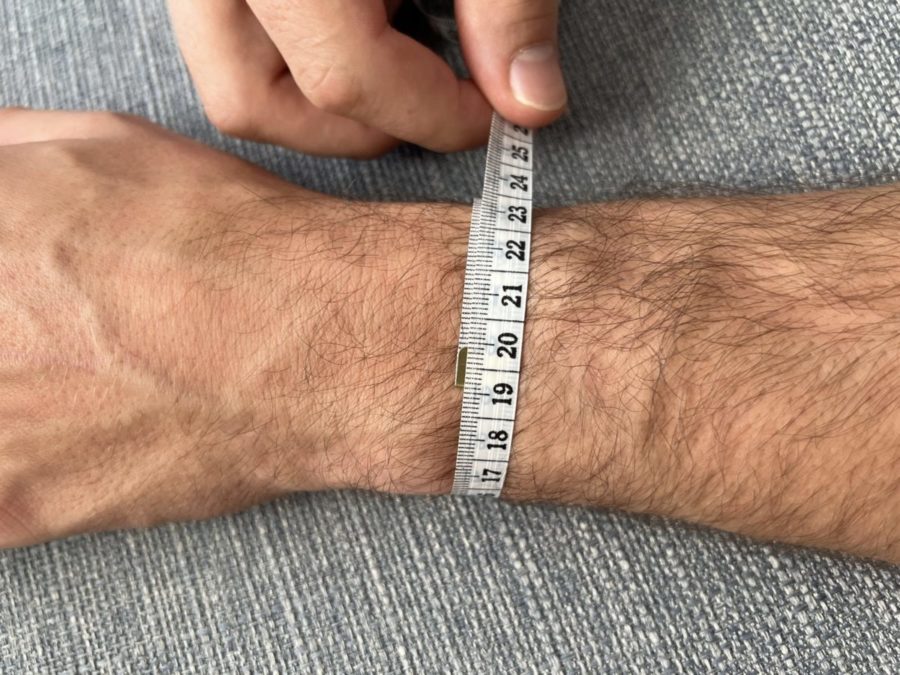
For your information, the average man’s wrist measures around 7 inches (around 18cm). It means I’ve got pretty much the average wrists men have.
The good thing about having average-sized wrists is that the array of suitable timepieces is vast. However, don’t worry if your wrists measure smaller or bigger because watch manufacturers have thought about it – most of them offer a wide choice for every wrist size.
Watch Size Chart
Now that we know the exact wrist sizes, we can finally suggest the most appropriate watch sizes for every wrist.
The following watch size chart suggests sizes based on the wrist’s cross-section measurement, as well as the wrist circumference.
Since watches usually come in whole numbers, the chart includes diameters in either direction of the exact result or how it is more logical.
Also, you’ll find the longest lug-to-lug distances that every wrist size carries out.
Note: This is only an indication of the watch sizes you should be aiming for. If you find the size suggestions aesthetically unsuitable for your wrist type, try smaller or larger sizes neighboring these suggestions.
Additional Factors To Consider
As you can see, there are many “buts” and “howevers” when it comes to suggesting the best watch sizes.
One thing is the numbers that look back at you from the chart, but another thing is how the watch actually fits the wrist.
And it’s not getting any simpler because several factors may alter the perceivable size of a watch, despite it being suitable in terms of case size.
The impact of these factors isn’t too significant but can still add or deduct up to a couple of millimeters from the actual watch size.
Therefore, you should consider the following factors to determine the best watch size for your wrist.
Watch Lugs
For a quick explanation of what the watch lugs are – they are the projections of the case (watch horns) that secure the strap or bracelet to the watch case.
Lugs come primarily flat or curved, directly affecting the suitability of a wristwatch.

Bear in mind that if you have slender wrists, try to choose a timepiece with curved lugs as it will embrace your wrist better. Flat lugs, on the other hand, suit better medium and large wrists.
The length of lugs also has importance in overall suitability.
While most of them are with a reasonable length for being in correlation with the watch case, there are still some examples where the lugs are either stretched or short (or don’t exist at all).
Stretched lugs make the perceptible size of a watch slightly bigger, while shorter lugs make it smaller. Therefore, pick a watch with long lugs to get a bigger impression, and choose shorter lugs for a smaller effect.
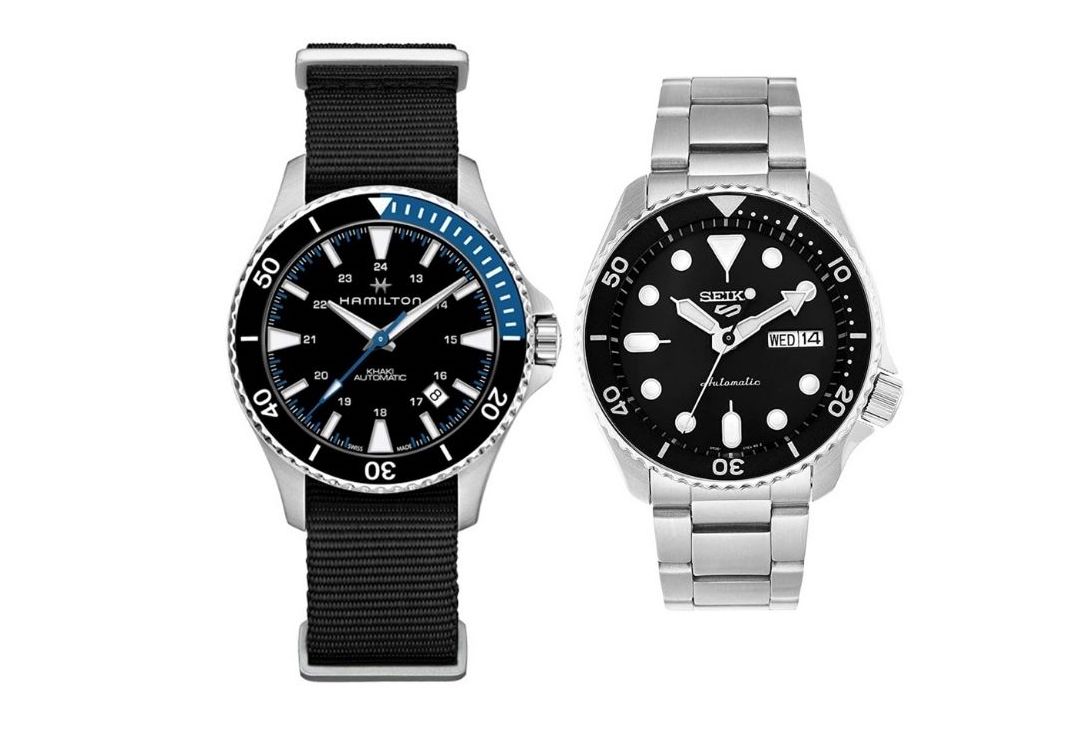
If, in any case, you need to actually measure the lug-to-lug distance, read our guide on watch lugs, where we’ve covered the topic thoroughly.
Watch Bezel
A bezel is another part of a watch that alters the perceivable watch size.
Let’s assume your case sizes, according to the watch size guide, are 40mm and 41mm. Now, the wristwatch you wish to buy has the suggested size, but it also features a dive bezel.
What happens is that the bezel takes up quite a lot of space on the outer circle of the case, reducing the size of the watch face. As a result, the perceivable size of the watch decreases along with it.
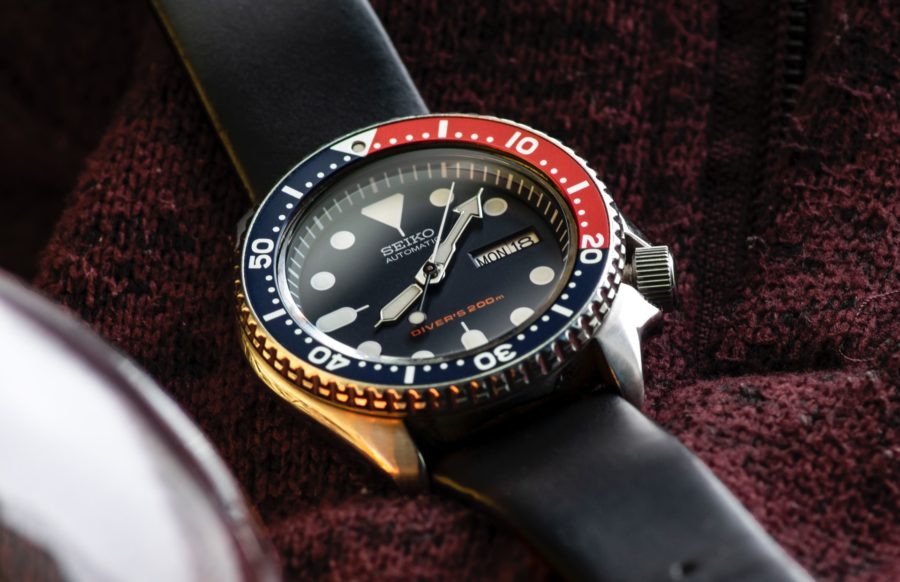
Therefore, in the existence of a bezel, pay attention to the visual case size, and determine how much it decreases the size.
In most cases, pick a watch with a bezel that is a bit larger than the suggested size to compensate for it.
Case Thickness
Case thickness is a serious factor in the perceivable size of a wristwatch – with the increase of the watch case diameter, the height usually grows along with it.
There’s nothing wrong with the case being thick. Quite the contrary, a large wristwatch looks complete with a dense case.
However, some small diameter watches can also have pretty thick cases, making the watch look larger. The same logic applies to big watches with thin cases – the perceptible size decreases.
Therefore, make sure not to underestimate the importance of watch thickness.
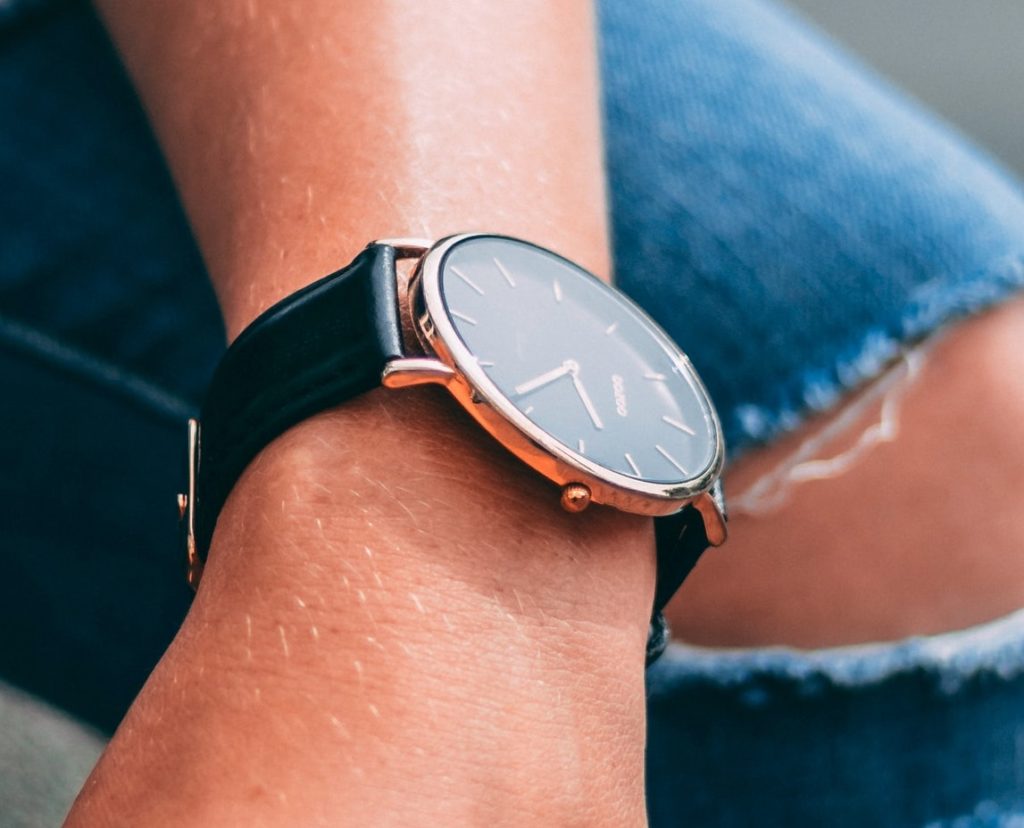
When talking about numbers, the typical thicknesses vary between 5 and 17 mm. Slim watches are usually 5-9mm in depth, whereas large come in 10-17mm sizes.
You’ll also find an automatic watch thicker than a quartz timepiece because of the intricacy of a mechanical caliber that inevitably requires more space to fit into the case.
Type-wise, dress watches and the majority of digital tickers tend to be thinner than, for instance, chronographs and dive watches.
Hour Markers Circle
The way the watch’s hour markers are placed can also make a watch smaller or bigger.
For example, if you look at the two watches below, both of them are the same size. However, the watch on the left seems smaller than the watch on the right.
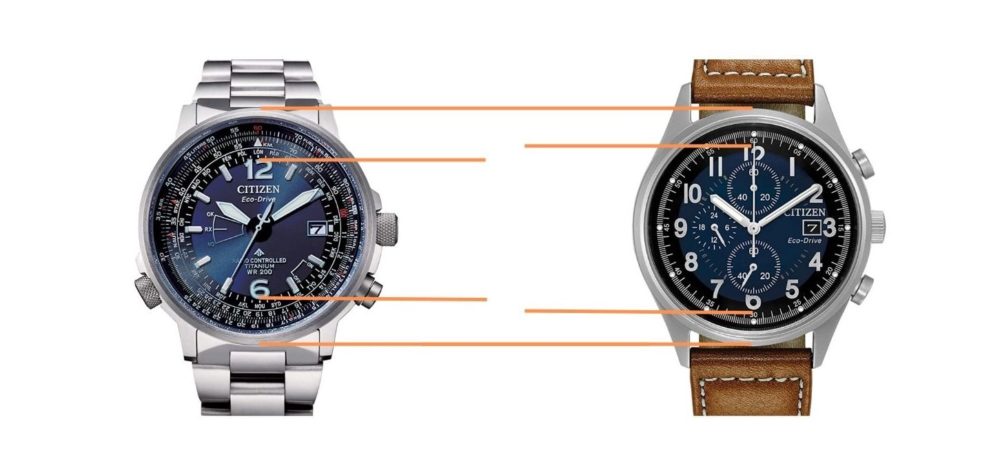
What causes the perceivable difference in size is how wide is the hour markers circle on a dial. If it’s not right on the edge of a dial, the watch looks smaller, and if it’s on edge, it gives an expected or even a larger impression than anticipated.
Black vs. White Dial
Women know very well that wearing black makes them slimmer, whereas white tells the truth.
The same logic applies to wristwatches – black dial watches look smaller than the same-sized white dial timepieces. It is down to the way our eyes perceive the colors.
Although the difference isn’t significant, it can still add or remove a millimeter or two for the perfect fit.
Strap Width & Material
Last but not least, we should not forget the second most conspicuous part of a watch – the band.
The typical band’s width is about 50% of the case diameter. Anything smaller makes the perceivable size smaller, and anything bigger works the opposite way.
Believe it or not, even the material of the band has some effect on visual perception.
Leather and fabric straps tend to give a more slender impression to watches, while metal bracelets a bigger.
Therefore, pick metal over the other options if you wish to increase the perceptible size, and go for the rest to decrease it.
Final Take
No set rules define the perfect size of a watch a man should wear, so it’s mainly down to personal preferences regarding what size wristwatches men wear. However, with the guidance of this watch size guide, you now at least know that an ideal watch takes up about 70% of your wrist’s cross-section.
Also, make sure not to forget to consider the watch lugs, band size, bezel, and case thickness as they affect the perceivable size of a watch.
You may also like:
Affiliate Disclosure: As an Amazon Associate I earn from qualifying purchases. Details
- CIGA Design Blue Planet Gilding Watch: The Best Conversation Starter Around? - April 2, 2023
- CIGA Design X-Series Review: The Most Skeleton for the Money? - July 7, 2022
- What Is A Dive Watch? A Complete Guide - May 17, 2022

